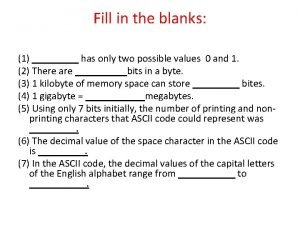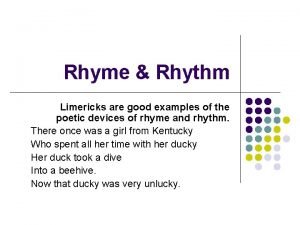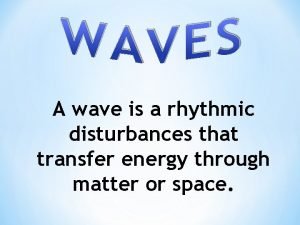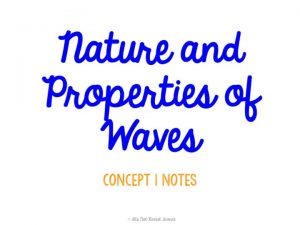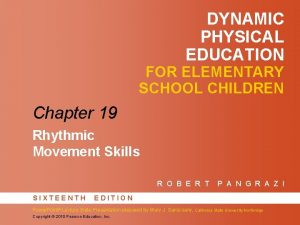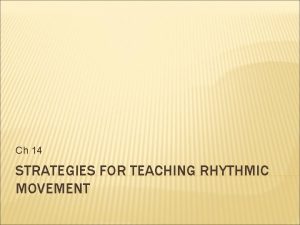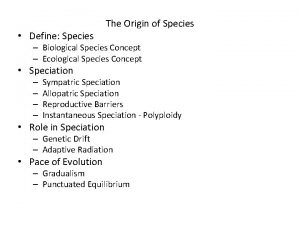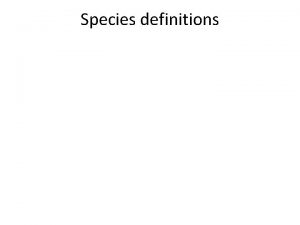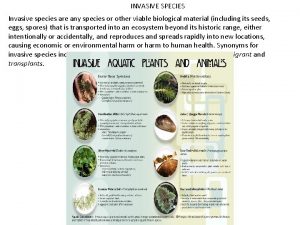Second Species Counterpoint Rhythmic Values Wholes in c

























- Slides: 25

Second Species Counterpoint



Rhythmic Values: Wholes in c. f/halves in Cpt Downbeats MUST be consonances Weak beats can be consonance or dissonance Any weak-beat dissonance must = a Passing Ton


1 2 3 4 5 6 7 8 9 10 11 12 13 1. Team Exercise: Calculate all the intervals in this 2 nd species exercise. 1 b. Team Exercise: Sing the counterpoint.

1 8 2 3 3 4 4 6 5 5 6 8 7 3 8 5 9 10 6 3 Answer 11 6 12 13 6 8

2. In 2 nd species, the cantus firmus moves in whole notes; the counterpoint, or added voice, generally moves in __________.

3. In the first bar of a 2 nd species example, you may write two half notes or __________.

4. Another exception to the “all-half-note-in-the-counterpoint rule” comes in the _______ bar of a 2 nd species counterpoint, where you can write either the normal two half notes per bar, or ____________. N. B. All species counterpoint examples have whole notes in the final bar.

8 3 4 6 5 8 3 5 6 3 6 6 8 5. In second species only ______ intervals occur on the downbeats.

8 8 8 5 3 4 3 5 6 6 5 8 6 7 3 5 6 3 5 3 6 6 3 8 4 6 6 a. How many dissonance(s) in the example above (give measure # -- beat). 6 b. Unlike in 1 st species, 2 nd species uses a dissonance. The only type of dissonance treatment permitted in 2 nd species is the ______.

8 8 5 3 5 6 6 7 6 3 5 3 3 4 6 7. In 2 nd species. dissonant passing tones occur only on _______ beats.

8 3 4 6 5 8 3 5 6 3 6 6 8 8 a. Are consonant passing tones permitted in 2 nd species? 9. Find all the CPTs in the above example (write measure # only).

* * 8 3 4 6 5 8 3 5 6 3 6 6 8 10. There is only one consonant passing tone combination in each direction: Ascending _____ and descending _______.

* 8 3 4 6 5 8 * 3 5 6 3 6 6 8 11. There are two additional possibilities for the second half of the bar, in addition to those above (diss. PT + cons. PT): _______ and _______.

+ * 8 3 4 6 5 8 3 5 6 3 6 6 8 11. There are two additional possibilities for the second half of the bar, in addition to those above (diss. PT + cons. PT): One is shown at the asterisk: _____________________ The second is shown at the + ________________

12. Repeated notes (tied across a bar) are permitted in ____ species but not in ____ species.

13. The final cadence is formed by__________ (a, b, and c): a) describe the motion in both voices in terms of scale degree b) describe the two intervals (general and specific names) c) type of melodic motion (stepwise/skip) and (parallel/similar/contrary/oblique) motion

14. In minor keys, you generally _____ the _______ at cadences.

* 15. In minor keys, when the melodic line ascends 6, 7 , 8, you must not only raise the LT, but also ___________

8 3 4 6 5 8 3 5 6 3 6 5 6 16. Placing “our” example in minor causes an error not present in major. Identify the error. 8

Team Exercises: Find the Mistakes in the example: 1 2 3

Write a Counterpoint to the second cantus firmus on the handout (B. )

 Counterpoint second species
Counterpoint second species Counterpoint trading
Counterpoint trading Ecommerce made simple
Ecommerce made simple A keystone
A keystone 186 282 miles per second into meters per second
186 282 miles per second into meters per second Humanity value meaning
Humanity value meaning Machavillian
Machavillian Instrumental values
Instrumental values The format character %8d will contain ____ decimals.
The format character %8d will contain ____ decimals. Western values vs eastern values
Western values vs eastern values Joint play grading
Joint play grading Compressed language
Compressed language Waves that use matter to transfer energy
Waves that use matter to transfer energy Foot poems
Foot poems Example of end rhyme
Example of end rhyme Metron scansion
Metron scansion A rhythmic disturbance that transfers energy
A rhythmic disturbance that transfers energy Rhythmic interpretation example
Rhythmic interpretation example Rhythmic disturbance that carries energy
Rhythmic disturbance that carries energy A repeated pattern designed to generate rhythmic momentum
A repeated pattern designed to generate rhythmic momentum Example of metric montage
Example of metric montage Rhythmic building blocks
Rhythmic building blocks Describe the rhythmic movement of a wave
Describe the rhythmic movement of a wave Early experiences in rhythmic movement should focus on
Early experiences in rhythmic movement should focus on With reference to waves what is a disturbance
With reference to waves what is a disturbance Wave behavior
Wave behavior








